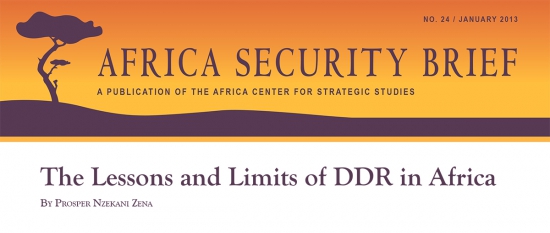Prosper Nzekani ZENA
The Lessons and Limits of DDR in Africa
11 äåêàáðÿ 2013
There are approximately 500,000 individuals in a variety of nonstate militias, national armies, and paramilitary groups slated to undergo DDR programs across Africa. This is consistent with the estimated average annual DDR caseload for most of the last decade. As previous large-scale efforts in Angola, Liberia, and Sierra Leone have wound down, new challenges in South Sudan, Côte d’Ivoire, and the Great Lakes region have emerged. Organized DDR initiatives were underway in 10 African states in 2012, and the need for disarmament was apparent in many others.
In Libya, scores of militias emerged during and after the 2011 anti-Qadhafi revolution, and subsequent clashes between them have resulted in hundreds of deaths. Such incidents have focused attention on DDR, but the prevailing volatility has compounded the reluctance among militias to disarm. Libyan authorities estimate that 150,000 combatants need to be disarmed and many judge this issue to be among the most difficult challenges of the post-Qadhafi transition.
Following a decade-long low-intensity conflict that culminated in a 5-month postelectoral crisis in 2011 in which 3,000 people died, Côte d’Ivoire faces immense DDR challenges as well. The United Nations (UN) peacekeeping mission there estimates that up to 100,000 combatants will need to be demobilized from among the former regime’s military, rebel forces, and various partisan paramilitary units. A spate of armed attacks in 2012 killed dozens of civilians and government troops as well as seven UN peacekeepers, indicating that militants remain a threat to stability. Insecurity has also spread to neighboring Liberia and Ghana, as fighters from Côte d’Ivoire have stored arms and launched attacks across their shared borders.
The fledgling government of South Sudan launched a disarmament program to downsize its security forces by 150,000 personnel and is mounting a separate effort to disarm individuals and local militias to stem worsening intercommunal violence. Roughly 20,000 former fighters from the Lord’s Resistance Army and other militias are waiting to complete a DDR process in Uganda. Approximately the same number has been waiting since 2009 for a DDR program to be implemented in the Central African Republic.
Âåðíóòüñÿ íàçàä
